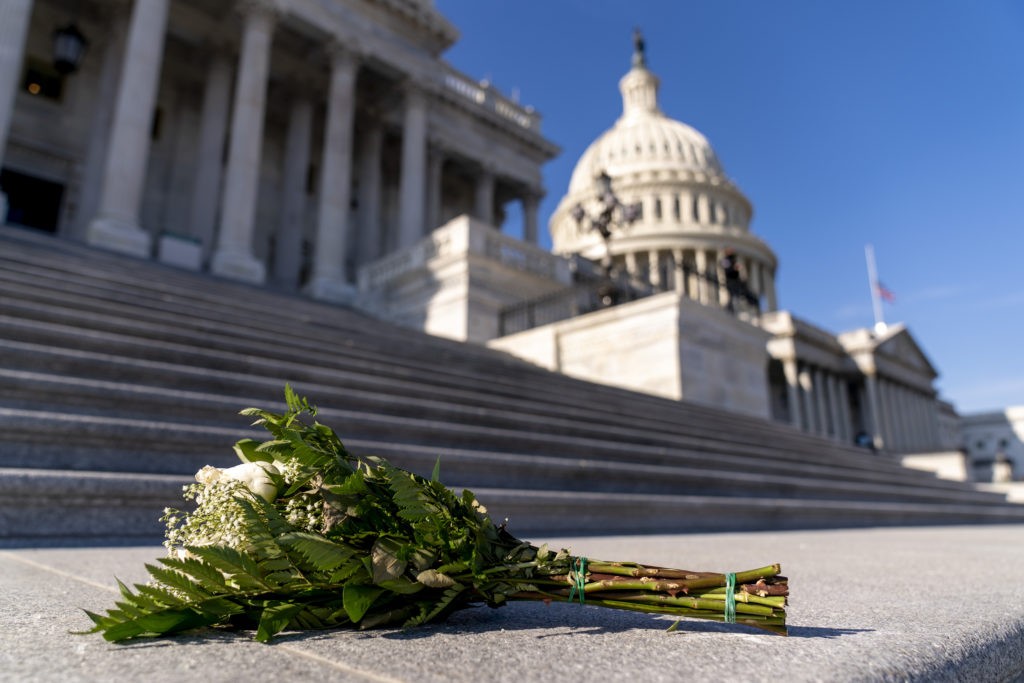
BYU history professors offered their insights on how to discuss the Capitol breach with students and compared it to other historical events.
The Jan. 6 insurrection shocked people across the country, including BYU history education professors Alisa Kesler-Lund and Jeff Nokes and political history professor Grant Madsen. Each expressed their personal reaction to the events and how they think it can be taught in the classroom.
They suggested comparing the insurrection to other historical events, using the opportunity to stress the importance of media literacy and discussing it in a factual manner.
“I 100% believe it will be in the history books,” Kesler-Lund said. “This is a moment you’re living through when you think, ‘this is a moment.’” She said she hopes the abundance of video and digital footage helps the insurrection remain contextualized and unsanitized for when future students learn about it.
She said the best way to help students now is to seize the insurrection as a teaching moment and help them view it through a social justice lens.
Kesler-Lund also suggested comparing the insurrection to other events in history. She used the Newburgh conspiracy of 1783 as her example. This was when an army of sorts formed to take action against Congress.
Nokes said he found the events troubling. “I was sad when I saw it happening,” he said. “I was really sad.”
He compared the mindset that instigated the riots to the “lost cause mentality” the South adopted following the Civil War when the Confederacy initially refused to accept its defeat and blasted the Union with accusations of foul play similar to those President Donald Trump has cast at Congress. Nokes called such behavior a way to save face when you’ve invested a lot in a lost cause.
Madsen, who called the events “terrible” and “shocking,” found connections between the riots and the old South as well. He compared the 2020 election to the election of 1876, where Samuel J. Tilden agreed to concede to Rutherford B. Hayes on the condition that the federal government agreed to stop overseeing reconstruction efforts, a deal that enabled the South to strip African Americans of their rights with impunity.
Madsen said the mishaps of the Tilden-Hayes election led to a reformed election process — the process Congress had been following when rioters interrupted their meeting — as well as one of the darker points for African Americans in our history.
Nokes commented on the importance of using the insurrection and similar tragic events as teaching moments. He counseled teachers to help students talk about what happened in a factual manner, explain government policies and procedures, and help students with different opinions feel comfortable expressing themselves.
“Some kids have a misconception about the constitution — some adults, too,” he said. He said the Constitution gives certain rights but not unlimited rights, which teachers can help students understand. He said he also believes it’s okay for teachers to call out leaders when they aren’t doing what the Constitution says.
Madsen said he would rather discuss topics other than the insurrection with his students. He specifically said he likes to bring up controversial subjects (which, he lamented, may dwindle with the end of the Trump administration) in his classes, and he hopes the riots become insignificant with time.
“You can never tell what is historically significant until you see how it unfolds,” he said. “But my hope is that this is a historical curiosity, not a turning point — not the moment when our electoral system started to fall apart.”
Madsen summarized the insurrection into a three-word lesson: “don’t do that.”
“Have some faith in the institutions that have been designed by our inspired forefathers, that we can resolve conflicts without resorting to extralegal means,” he said.
Nokes and Kesler-Lund both suggested teachers use the opportunity to show the importance of media literacy. They said they believe helping students understand how to contextualize and critically read information could help them see through the disinformation that persuasive speakers spread.
Nokes also said helping students become media literate would have greater benefits for society than censoring harmful information.
“If the government cuts off speech,” he said, “it interferes with people’s ability to obtain ideas — good and bad — and make educated decisions.”




